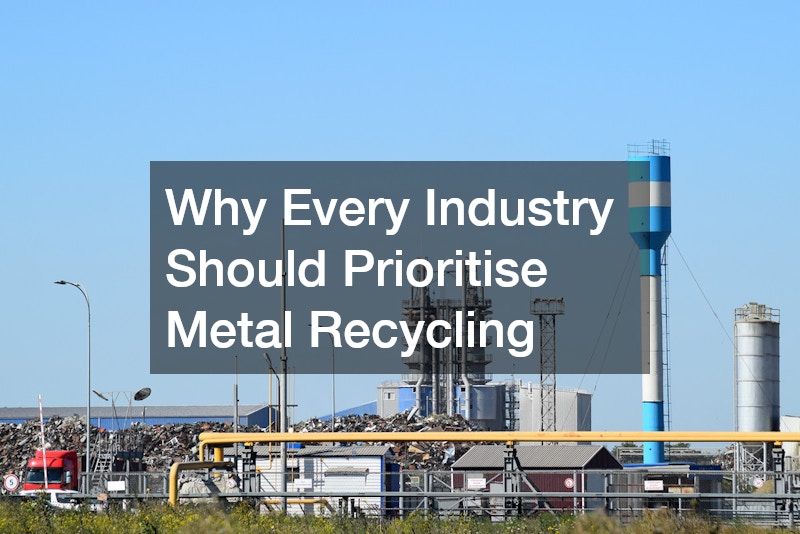Selecting the right steel products is essential to the success, longevity and safety of any construction or fabrication project. With so many grades, shapes and finishes available, making the correct choice can be challenging, especially if you’re not familiar with the technical aspects of steel materials.
Whether you’re working on a commercial structure, a residential renovation or a piece of custom machinery, understanding what steel can offer and how to select the right type will make all the difference. Choosing incorrectly can lead to project delays, increased costs and structural issues, so it’s worth investing the time to make informed decisions.
Understand Your Project Requirements
The first step to selecting steel products is getting a clear idea of what your project involves. Are you building a load-bearing structure, reinforcing concrete or fabricating custom components? Different applications require different grades of steel with varying strength, flexibility and resistance properties.
For example, if you’re constructing a framework for a building, structural steel like I-beams or H-sections might be required. On the other hand, decorative metalwork or lightweight supports might be better served with hollow steel sections or sheet metal.
Understanding the physical and environmental demands of your project will guide you toward steel types that meet performance and safety standards. Climate conditions, load factors and corrosion risks all need to be considered at this early stage.
Choose the Right Steel Grade
Not all steel is created equal. Each steel grade has unique properties that affect how it performs under stress, resists corrosion or reacts to welding and fabrication. Carbon steel, stainless steel and galvanised steel are among the most common types used in construction and manufacturing across Australia.
Carbon steel is strong and cost-effective, making it a popular choice for structural applications. Stainless steel, while more expensive, offers excellent corrosion resistance and is ideal for outdoor or high-moisture environments. Galvanised steel features a protective zinc coating to prevent rust and is often used in fencing, roofing and rural applications.
Speak with a supplier or engineer if you’re unsure which grade suits your needs. The right grade ensures longevity and compliance with Australian standards, which is critical for structural and safety performance.
Determine the Right Shape and Size
Steel products come in a wide range of shapes and sizes, from large universal beams to small precision-cut sheets. Choosing the correct dimensions is vital not only for functionality but also for ease of installation and transportation.
For structural work, consider standard sizes that fit within Australian Building Codes to avoid costly customisation. For smaller applications or bespoke designs, custom fabrication might be necessary, in which case working with a local fabricator could help streamline the process.
Make sure to account for load-bearing capacity, clearance and joining methods when deciding on size and shape. Misjudging dimensions can cause headaches later during the build or assembly.
Consider the Finish and Coating
The surface finish of steel plays a role in both its appearance and performance. In applications where aesthetics matter, polished or brushed finishes are preferred. For industrial or exposed outdoor use, protective coatings like galvanising, powder coating or paint may be necessary.
A proper finish can extend the life of your steel products by providing resistance to rust, abrasion or chemical exposure. It’s especially important in coastal areas where salt air can speed up corrosion.
Also consider whether your steel will need post-processing such as welding, cutting or bending. Some coatings may need to be reapplied after these steps, so it’s wise to plan for that early on.
Work With a Trusted Supplier
Choosing the right steel products also means choosing the right supplier. A reputable steel provider will not only offer a wide range of products but also provide advice, support and certification. This is particularly important for large or critical projects where material quality needs to be verifiable.
Look for suppliers that meet Australian quality standards and offer mill certificates to confirm the grade and origin of the steel. Local suppliers can also provide quicker turnaround times and more personalised service, which can be invaluable during tight project timelines.
If your project requires cutting, drilling or fabrication, some suppliers also offer processing services in-house. This reduces the need for third-party contractors and simplifies your workflow.
Factor in Your Budget Without Compromising Quality
While it’s tempting to choose steel products based on price alone, it’s important not to compromise quality in the process. Lower-cost materials may not meet structural requirements or may deteriorate faster under pressure or exposure.
Instead, aim for a balance between value and performance. Consider long-term costs such as maintenance, replacement and potential downtime if materials fail. Investing in quality steel from a reliable source is more cost-effective in the long run.
Choosing the right steel products starts with understanding the unique requirements of your project and ends with making informed decisions about grade, finish and sourcing. From large-scale structural beams to finely cut sheets, each choice impacts the durability, safety and success of the build.
Work with knowledgeable suppliers, prioritise quality over short-term savings and consider every step of your project when making material decisions. With careful planning, you’ll ensure your steel supports your vision today and well into the future.




